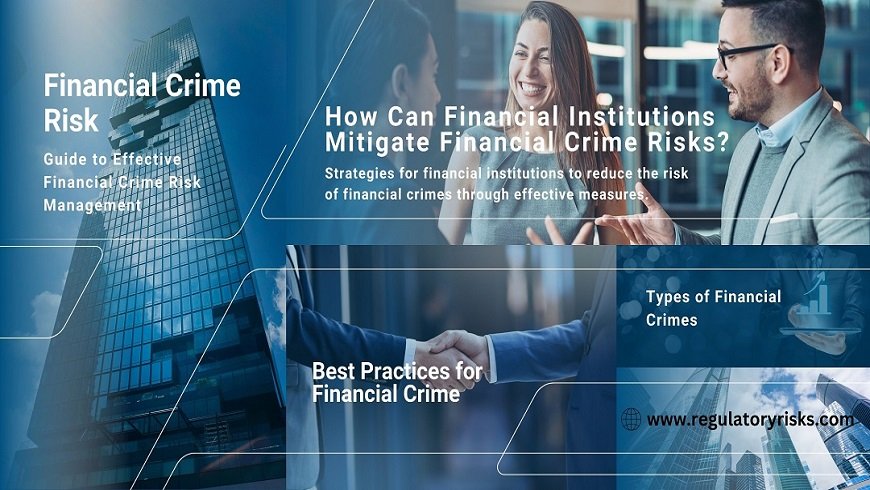Understanding Financial Crime Risk Management (FCRM): Key Insights
Learn about Financial Crime Risk Management (FCRM) and how to implement effective strategies to protect financial institutions from fraud and other financial crimes.

Financial Crime Risk Management (FCRM) is a critical aspect of modern financial institutions, designed to protect against various types of financial crime and fraud. In an era where financial crimes are becoming increasingly sophisticated, the necessity for robust financial crime risk management systems cannot be overstated. Therefore, this article aims to provide a comprehensive guide to understanding and implementing effective FCRM practices, focusing on key components, risk mitigation strategies, and best practices for financial crime prevention.
What is Financial Crime Risk Management (FCRM)?
Understanding the Basics of Financial Crime Risk
Financial crime risk management is the practice of identifying, assessing, and mitigating the risks associated with financial crimes. These crimes include money laundering, fraud, and other illegal activities that can compromise an organization’s financial integrity. Essentially, the primary goal of FCRM is to protect financial institutions from financial criminals who seek to exploit vulnerabilities in financial systems and processes. By implementing effective risk management strategies, financial institutions can safeguard their financial information and maintain the trust of their customers.
Key Components of FCRM
Key components of FCRM include anti-money laundering (AML) measures, Know Your Customer (KYC) protocols, transaction monitoring, and the use of advanced analytics. AML measures are designed to detect and prevent money laundering activities, while KYC protocols ensure that financial institutions have a thorough understanding of their clients' financial activities. Moreover, transaction monitoring involves the continuous oversight of financial transactions to identify suspicious behavior. Additionally, advanced analytics, including machine learning, help in identifying potential risks and patterns that might indicate financial crime.
Importance of Compliance in FCRM
Compliance with regulatory standards is crucial in financial crime risk management. Regulatory compliance ensures that financial institutions adhere to laws and regulations designed to prevent financial crimes. Failure to comply can result in severe penalties, reputational damage, and increased vulnerability to financial crime. Therefore, maintaining robust compliance frameworks is essential for the effective management of financial crime risks. Compliance also involves regular audits, risk assessments, and updates to FCRM systems to keep pace with evolving financial crime tactics.
How Can Financial Institutions Mitigate Financial Crime Risks?
Implementing Anti-Money Laundering (AML) Measures
Anti-money laundering measures are essential for mitigating financial crime risks. AML measures include detailed monitoring of financial transactions, reporting suspicious activities, and conducting thorough customer due diligence. Financial institutions must implement comprehensive AML programs that comply with local and international regulations. By doing so, they can detect and prevent money laundering activities, thereby reducing the overall risk of financial crimes within their organization.
Leveraging Analytics and Machine Learning
Leveraging analytics and machine learning technologies is a powerful approach to managing financial crime risks. These technologies provide deeper insights into financial data, enabling institutions to identify patterns and anomalies indicative of financial crime. For example, machine learning algorithms can analyze vast amounts of data at high speed, uncovering hidden risks and enhancing the accuracy of risk assessments. By integrating these technologies into their FCRM systems, financial institutions can improve their ability to detect and prevent financial crimes.
Role of FCRM Tools in Risk Mitigation
FCRM tools play a vital role in the mitigation of financial crime risks. These tools include software for transaction monitoring, risk assessment, and regulatory compliance. Notably, advanced FCRM tools utilize artificial intelligence and machine learning to automate and enhance the detection of suspicious activities. Furthermore, they provide real-time alerts and detailed reporting, allowing financial institutions to respond swiftly to potential threats. By using these tools, institutions can better manage financial crime risks and ensure the integrity of their financial operations.
What Types of Financial Crimes Should Be Monitored?
Identifying Various Types of Financial Crime
Financial institutions must monitor a wide range of financial crimes, including fraud, money laundering, terrorist financing, and insider trading. Each type of financial crime poses unique risks and requires specific detection and prevention strategies. For instance, money laundering involves disguising the origins of illegally obtained funds, while fraud typically involves deception to secure unlawful financial gain. Therefore, understanding the different types of financial crimes is crucial for developing tailored FCRM strategies.
Understanding Sophisticated Financial Crimes
Sophisticated financial crimes are increasingly challenging to detect and prevent due to their complexity and the use of advanced technologies by financial criminals. These crimes often involve multiple layers of transactions across various jurisdictions, making them harder to trace. As a result, financial institutions must stay ahead of these sophisticated tactics by continuously updating their FCRM systems and employing advanced analytical techniques. Additionally, collaboration with other financial institutions and regulatory bodies also enhances the ability to combat sophisticated financial crimes.
Common Fraud and Financial Crime Tactics
Common fraud and financial crime tactics include phishing, cyber-attacks, identity theft, and fraudulent transactions. Phishing involves tricking individuals into providing sensitive financial information, while cyber-attacks target financial systems to steal data or disrupt operations. Meanwhile, identity theft involves the unauthorized use of personal information to commit financial fraud. Thus, financial institutions must employ robust security measures, such as encryption and multi-factor authentication, to protect against these tactics and ensure the safety of their financial information.
How to Conduct a Financial Crime Risk Assessment?
Steps in Financial Crime Risk Assessment
Conducting a financial crime risk assessment involves several key steps. First, financial institutions must identify potential financial crime risks by analyzing their financial activities and customer profiles. Next, they must assess the likelihood and impact of these risks, taking into account factors such as transaction volumes, geographic locations, and customer types. Based on this assessment, institutions can develop and implement risk mitigation strategies, such as enhanced due diligence and transaction monitoring. Regular reviews and updates to the risk assessment process are essential to address emerging threats and maintain effective risk management.
Identifying Potential Financial Crime Risks
Identifying potential financial crime risks requires a comprehensive understanding of the financial institution’s operations and the external environment. Financial institutions must analyze their transaction data, customer behaviors, and market trends to detect unusual patterns that may indicate financial crime. They should also consider external factors, such as regulatory changes and economic conditions that could influence the risk landscape. By proactively identifying potential risks, institutions can develop targeted strategies to mitigate these threats and protect against financial crime.
Mitigating Risks through Effective FCRM Solutions
Effective FCRM solutions are essential for mitigating financial crime risks. These solutions include deploying advanced technologies, such as machine learning and artificial intelligence, to enhance the detection and prevention of financial crimes. Financial institutions should also implement comprehensive training programs for their staff to ensure they are equipped to identify and respond to financial crime risks. Furthermore, collaboration with regulatory bodies and other financial institutions can further strengthen risk mitigation efforts. By adopting a multi-faceted approach, institutions can effectively manage financial crime risks and maintain the integrity of their financial operations.
What are the Best Practices for Financial Crime Prevention?
Enhancing Regulatory Compliance
Enhancing regulatory compliance is a fundamental aspect of financial crime prevention. Financial institutions must stay updated with the latest regulatory requirements and ensure their FCRM systems are aligned with these standards. Regular audits and compliance checks help identify any gaps or weaknesses in the existing processes. By maintaining high standards of regulatory compliance, institutions can reduce the risk of financial crimes and avoid penalties associated with non-compliance.
Operational Efficiency in Financial Crime Prevention
Operational efficiency is crucial for effective financial crime prevention. Financial institutions must streamline their processes and leverage technology to enhance the efficiency of their FCRM practices. Automated systems for transaction monitoring and risk assessment can significantly reduce the time and resources required to identify and mitigate financial crime risks. Additionally, integrating different FCRM tools and platforms can improve the overall effectiveness and efficiency of financial crime prevention efforts.
Training Analysts and Financial Service Providers
Training analysts and financial service providers is essential for effective financial crime prevention. Comprehensive training programs should cover the latest financial crime tactics, regulatory requirements, and best practices for risk management. By equipping their staff with the necessary knowledge and skills, financial institutions can enhance their ability to detect and prevent financial crimes. Ongoing training and professional development are also important to keep pace with the evolving financial crime landscape and ensure continuous improvement in FCRM practices.
Conclusion
In the face of an ever-evolving regulatory environment, financial crime risk management has become a critical function for businesses across sectors. With the increasing complexity of global operations, especially in high-risk industries like crypto and digital assets, robust compliance strategies are crucial. By leveraging the expertise of financial crime compliance consultants and utilizing advanced technologies, businesses can navigate these challenges while capitalizing on growth opportunities. Freelance marketplaces offer the flexibility and cost-efficiency that businesses need to maintain effective compliance in today’s dynamic landscape.
As regulations continue to tighten, proactive financial crime compliance will be key to not only avoiding fines and reputational damage but also gaining a competitive edge in a globalized marketplace.
What's Your Reaction?
























